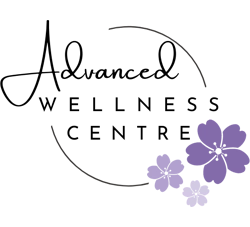Understanding Piriformis Syndrome: A Chiropractic Approach IN Ottawa ON

Many athletes suffer recurrent muscle problems that turn into chronic pain in Ottawa ON. Three important muscles of the lower body that can cause chronic pain are the piriformis, iliotibial bands and the iliopsoas (hip flexor) muscles. Three major issues of these muscles are piriformis syndrome, iliotibial band syndrome and iliopsoas syndrome.
In each of these problems, the body biomechanics must be addressed. For the athlete and the average person alike, a joint and muscle approach often works bests. This would include chiropractic as the main treatment for joint misalignments causing the imbalances, with the addition of physiotherapy, massage or acupuncture to stretch and relax muscles. Chiropractic care is frequently necessary with each of these syndromes to remove any distortion patterns in the kinetic chain from feet through pelvis and lower back. For some, orthotics and a gait analysis may be helpful, as well as a stretching program and/or core stabilization exercises. For recalcitrant cases, an MRI should be performed to isolate the degree of the injury.
Piriformis Syndrome in Ottawa ON
The piriformis syndrome is a condition in which the piriformis muscle irritates the sciatic nerve, causing pain in the buttocks and referring pain along the course of the sciatic nerve. This referred pain often goes down the back of the thigh and/or into the lower back. Patients generally complain of pain deep in the buttocks, which is made worse by sitting, climbing stairs, or performing squats.
The sciatic nerve exits the lumbar and sacral spine at several vertebral levels (L2-L5, S1-S4) before it reaches the piriformis muscle. If the sciatic nerve is subluxated (irritated, compressed) above the level of the piriformis, it is called sciatica. If the nerve is only compressed by the muscle, it is purely piriformis syndrome. However, many people have both at the same time.
The piriformis muscle assists in abducting and laterally rotating the thigh. In other words, while balancing on the left foot, move the right leg directly sideways away from the body and rotate the right leg so that the toes point towards the ceiling. This is the action of the right piriformis muscle.
Stretching the muscle often duplicates the pain
Anatomically, the piriformis muscle lies deep to the gluteal muscles. It originates from the sacral spine and attaches to the greater trochanter of the femur, which is the big, bony "bump" on the outside top of the thigh. The sciatic nerve usually passes underneath the piriformis muscle, but in approximately 15% of the population, it travels through the muscle. It is thought that acute or chronic injury causes swelling of the muscle and irritates the sciatic nerve, resulting in sciatica. Patients with an aberrant course of the nerve through the muscle are particularly predisposed to this condition.
The piriformis syndrome is diagnosed primarily on the basis of symptoms and on the physical exam. There are no tests that accurately confirm the diagnosis, but X-rays, MRI, and nerve conduction tests may be necessary to exclude other diseases. Some of the other causes of sciatica include disease in the lumbar spine (e.g. disc herniation), chronic hamstring tendinitis, and fibrous adhesions of other muscles around the sciatic nerve.
Iliotibial Band Syndrome, IT Band Friction Syndrome, and Patella-Femoral Syndrome
IT Band Syndrome is an overuse injury that is common in endurance athletes like runners and bikers. It affects a tissue that runs from the side of your hip all of the way down past your knee. Most of the time, the inflammation manifests itself as pain on the outside of the knee. It can be incredibly painful and is typically a frustratingly stubborn injury to deal with. Looking at the anatomy can help you realize that the cause of the pain can be anywhere from the hip to the knee, so getting to the root cause can be a little tricky, but here are some solutions to a few of the most common causes of IT band syndrome.
- Overuse (running, biking, rowing)
- Poor alignment of foot, knee, hip or lower back
- Weak hip adductor muscles or tight hamstrings
- Nerve damage in lower back
ITBS is often confused with patella-femoral pain syndrome, the “other” runner’s knee injury. Although the two conditions can certainly seem quite similar, usually you can tell the difference just by the location of the pain. IT band pain is truly a side of the knee condition, and the epicentre of the symptoms is always there, by definition. On the other hand, if you have pain that definitely dominates the front of your knee, there’s a good chance that you have patella -femoral pain syndrome.
Iliopsoas Syndrome
This muscle is actually comprised of two muscles: the psoas muscle and the iliacus muscle. They are better known as the hip flexors and are synergistic in function. Because it attaches along the spine, the iliopsoas plays a major role in maintaining upright posture, assists in lumbar spine movement and influences the ideal curve or your spine.
Frequently and all too often, this injury is mis-diagnosed due to its pain referral patterns to the hip, lower back and thigh so a detailed examination via Applied Kinesiology and Biomechanics as well as a detailed history of occurrence is necessary to pin this issue down.
Symptoms of Iliopsoas Syndrome:
- Psoas & Iliopsoas dysfunction can cause pain in the following areas:
- Lower abdomen
- Inguinal/Groin
- Buttocks
- Thigh and Leg
- Hip area
- Lower Back
- Sacroiliac Joint
- Across the top of pelvic bone (Iliac Crest)
- Stiffness and/or snapping/clicking in hip region
Causes of Iliopsoas Syndrome:
- Repetitive hip flexion demands as in repetitive stress athletics
- Chronically shortened hip flexors secondary to prolonged sitting postures
- Speed/Track work without proper ramp up phase and/or training techniques
- Tight/short hip rotators
- Poor core/abdominal strength
- Excessive lumbar curve (lordosis)
- Pelvic unleveling/torsion and/or leg length discrepancy
- Pronation of the feet/ankles
- Tight/short quadriceps
- Hip joint restrictions
- Repetitive stress injuries from activities like prolonged sitting, cycling and ballet dancing (from the turn outs).
Management of and Solutions for Iliopsoas Syndrome:
Chiropractic treatments and massage or acupuncture work well together for the best results. Due to the depth of this muscle tissue, if you have had a recent injury it may require some active rest and/or avoidance of some activities for a few of weeks to allow for the acute inflammation to subside. Finally, to assist recovery and to prevent recurrence, chiropractic treatments help to maintain proper alignment, joint support and reduce trigger points.
How Chiropractic Care Can Help You with Piriformis Syndrome
Piriformis Syndrome is a condition that occurs when the piriformis muscle, located in the buttocks, becomes tight or spasms, leading to compression or irritation of the sciatic nerve. This compression can result in pain, tingling, and numbness in the buttocks and down the leg.
Chiropractic care offers a holistic and non-invasive approach to addressing Piriformis Syndrome. Chiropractors focus on restoring proper alignment and function to the spine and pelvis, which can alleviate pressure on the piriformis muscle and sciatic nerve.
Key Benefits of Chiropractic Treatment for Piriformis Syndrome
- Spinal Adjustment: Chiropractors use precise adjustments to realign the spine and pelvis, reducing tension on the piriformis muscle and alleviating sciatic nerve compression.
- Soft Tissue Manipulation: Gentle techniques are employed to release tension in the piriformis muscle, promoting improved flexibility and reducing pain.
- Posture Correction: Chiropractors help patients improve their posture, which plays a crucial role in preventing and managing Piriformis Syndrome.
- Customized Exercise Programs: Tailored exercises are prescribed to strengthen supportive muscles and improve overall mobility, aiding in long-term relief.
Unlocking Relief with Acupuncture for Piriformis Syndrome
Acupuncture can also help someone with piriformis issues. Discover the natural healing power of acupuncture in managing Piriformis Syndrome. Modern and Ancient Acupuncture approaches involve the insertion of thin, sterile needles into specific points on the body to stimulate energy flow, circulation, muscle relaxation, and promote whole-body balance. For individuals struggling with Piriformis issues, acupuncture can be a game-changer. The precision of acupuncture points targets areas of tension and promotes the release of tight muscles, including the piriformis. This gentle and time-tested practice not only helps alleviate pain and discomfort but also enhances overall well-being. Our skilled acupuncturist tailors each session to address your unique needs, providing a holistic approach to relieving Piriformis Syndrome. Experience the soothing benefits of acupuncture and take a step towards a more comfortable and balanced life.
Signs and Symptoms of Piriformis Syndrome
- Buttock Pain: Persistent pain in one or both buttocks.
- Radiating Pain: Pain that travels down the back of the leg.
- Tingling and Numbness: Sensations of tingling or numbness in the buttocks or leg.
- Difficulty Sitting: Discomfort or pain while sitting for extended periods.
Prevention and Self-Care Tips
Alongside chiropractic care, patients can take proactive steps to manage Piriformis Syndrome:
- Stretching Exercises: Incorporate regular stretches, especially for the piriformis muscle.
- Ergonomic Adjustments: Ensure proper ergonomics at work and home to support spinal health.
- Regular Movement: Avoid prolonged periods of sitting; take breaks and engage in gentle movement throughout the day.
Schedule Your Chiropractic Consultation
If you're experiencing symptoms of Piriformis Syndrome, our experienced chiropractors are here to help. Schedule a consultation to assess your condition and develop a personalized treatment plan that addresses the root cause of your discomfort.
Invest in your well-being and take the first step towards a pain-free, active life. Contact us today to schedule your appointment!
Need more information?
Many symptoms can be helped with preventative care like acupuncture, chiropractic, massage, physio and laser therapy. We strongly recommend anyone experiencing the symptoms discussed on this page, see one of our health professionals soon.
Monday
4:00pm - 6:00pm
Tuesday
11:00am - 2:00pm
3:30pm - 6:00pm
Wednesday
11:00am - 2:00pm
3:30pm - 6:00pm
Thursday
11:00am - 2:00pm
Friday
Closed
Saturday
12:00pm - 3:00pm
Sunday
Closed
Advanced Wellness Centre
200 Metcalfe St Main Floor
Ottawa, ON K2P 1P7
SMOKE FREE
Please do not smoke within one hour of your appointment.
SCENT FREE
Please keep the air we share fragrance and scent-free.
FREE PATIENT PARKING
Evenings after 5:30pm, Weekends & 3 Reserved Spots in front.




